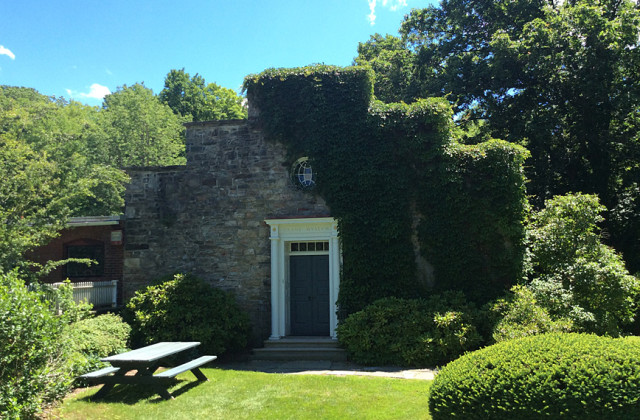The Berkshire Rambler
Crane Paper Company: Seven Generations of Making Money
By Michael Kelly
High quality paper has been an intrinsic part of the lives of the Crane family of Dalton, Mass. for almost 250 years. Stephen Crane started the business, making 100 percent cotton paper at the Liberty Mill in Milton, Mass., which Paul Revere printed into banknotes that helped finance the American Revolution.
In 1799, Stephen’s son, Zenas, sensing a paper shortage in the hinterlands of Massachusetts headed west on horseback until he found an ideal place to make paper—on the banks of the pristine Housatonic River. Seven generations later, Crane family members are still, anachronistically in these times of corporate takeovers and global outsourcing, very much involved in the paper making trade.
Despite the surge of credit card use in the last few decades, paper currency is still a robust, profitable business. Since 1879, Crane has been the sole provider of the 75 percent cotton/25 percent linen paper used to print all paper money in circulation in the United States. Last year alone, Crane paper was printed into several denominations of bills worth $213 billion, decorative and utilitarian artifacts of the churn of everyday commerce.
Currently there is over $1 trillion in circulation, 75 percent of which is outside the United States. Crane creates everything in paper money, while the Bureau of Engraving and Printing handles all that goes on money. Crane likes to say they make the pizza crust, from scratch, with all the right ingredients, while government facilities in Washington, D.C. and Fort Worth, Texas provide the toppings (ie., the engraving and printing).
Crane buys cotton scraps and cuttings by the ton from textile factories all over the world, and also acquires used clothing from Goodwill and The Salvation Army. Blind Joe, an employee at the Goodwill store in Dalton sorts cotton clothes by feel, discarding all denim which Crane hasn’t used since dungarees started to incorporate spandex.
To achieve the United States’ currency’s unique feel, durability and printability, Crane starts by beating cotton rags into pulp in a boiling, milkshake-like solution of sodium hydroxide and water. Two hours after soaking in a large pressure cooker to remove impurities, waxes and oils, it is bleached before going through a vice-like press under millions of pounds of pressure to squeeze out most of the water.
Finished slurry sheets are further dried, cut, coated and stacked into reams on enormous pallets before the hard part begins: foiling counterfeiters. Crane was first to develop anti-counterfeiting techniques in 1847 when they embedded silk threads into banknotes. Ever since, it has been a constant battle to thwart sophisticated, cunning counterfeiters, but Crane has always been equal to the task.
Years ago, working with the government and copier makers, Crane developed a software program which automatically shuts down your copier and notifies the police if you try to make money at home or in your office. Plastic security strips invisible in reflected light, embedded, shifting watermarks and motion switch technology (animation that switches between images when the note is tilted), are just some of Crane’s innovations that have kept counterfeiters at bay. After 15 years of development and research, Crane came up with a patented technology for the new $100 bill, which involves a complicated, high-tech reverse printing on a metallic polyester strip.
While Crane is at the cutting edge of making paper the most secure way to transact business, credit card makers are lagging far behind. We have become inured to using credit cards everyday though they are six times less secure than paper money. Credit card security breaches have become commonplace, affecting millions of people a year, yet we willingly give up our account numbers online and over the phone for the sake of convenience.
It’s not surprising that the unique feel of United States’ money is more like fabric than paper to the touch, the texture of fine stationary. After years of making the world’s highest quality stationary, personalized notecards and party invitations for heads of state and celebrities, the Internet took its toll on the stationary business, so Crane sold their stationary business to their employees to concentrate on making currency paper. In just a couple of years, under the venerable Crane name, the employee/owners have managed to make the stationary business profitable again.
The Crane Paper Making Museum is located in the original Rag Room of the 1844 Old Stone Mill in Dalton, 42 miles from Norfolk’s Village Green. Since 1930, it has been open free of charge Monday to Friday from 1 to 5 p.m., June through October. Inside are educational displays on the history of papermaking, a step-by-step video on the labor-intensive papermaking process and informative guided tours by former Crane factory workers. Kids will especially enjoy the hands-on papermaking demonstration during which they can actually make a sheet of paper from scratch.

